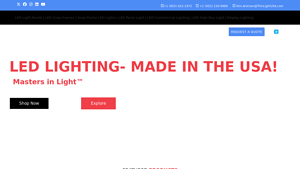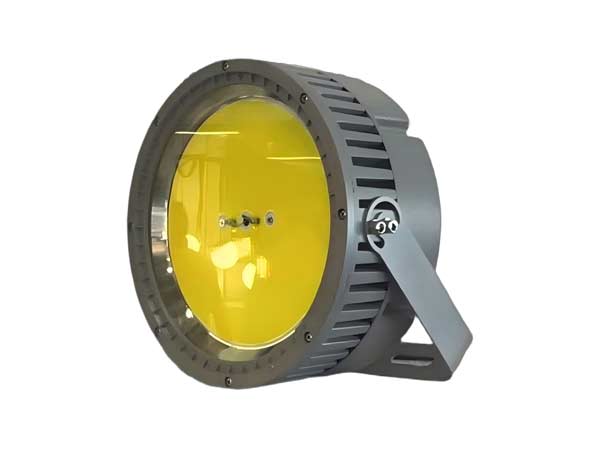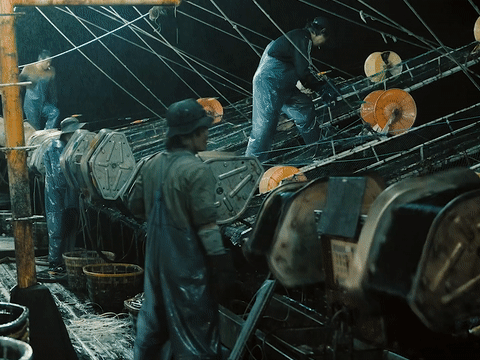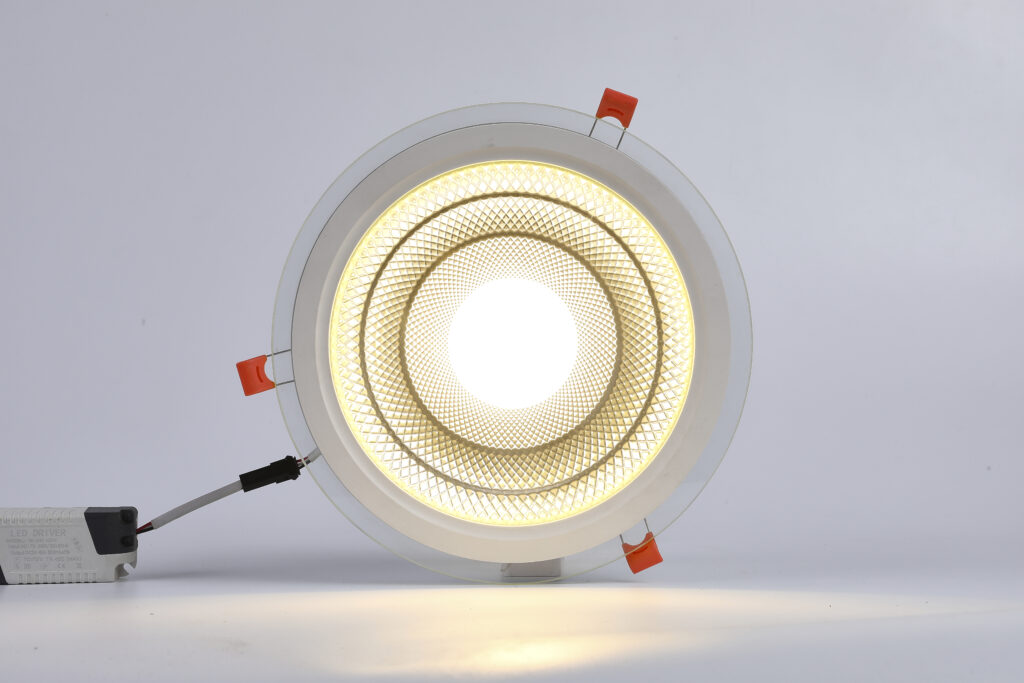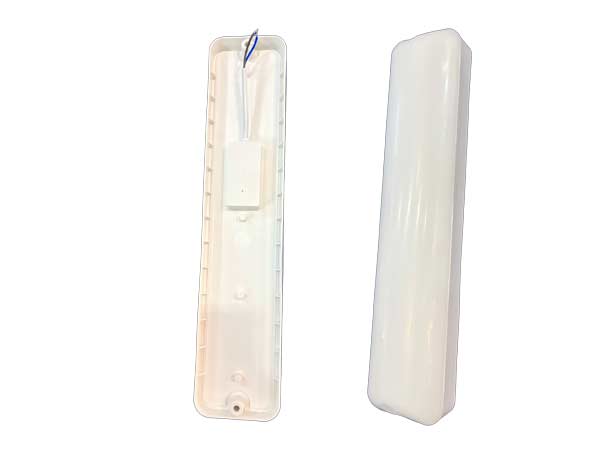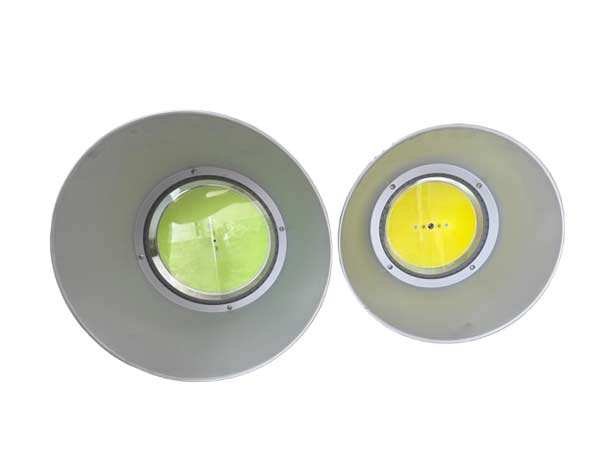Article Navigation
- Introduction: Navigating the Global Market for Round Glass LED panel lights
- Understanding Round Glass LED panel lights Types and Variations
- Key Industrial Applications of Round Glass LED panel lights
- Strategic Material Selection Guide for Round Glass LED panel lights
- In-depth Look: Manufacturing Processes and Quality Assurance for Round Glass LED panel lights
- Comprehensive Cost and Pricing Analysis for Round Glass LED panel lights Sourcing
- Spotlight on Potential Round Glass LED panel lights Manufacturers and Suppliers
- Essential Technical Properties and Trade Terminology for Round Glass LED panel lights
- Navigating Market Dynamics, Sourcing Trends, and Sustainability in the Round Glass LED panel lights Sector
- Frequently Asked Questions (FAQs) for B2B Buyers of Round Glass LED panel lights
- Important Disclaimer & Terms of Use
- Strategic Sourcing Conclusion and Outlook for Round Glass LED panel lights
Introduction: Navigating the Global Market for Round Glass LED panel lights
In an era where energy efficiency and aesthetic appeal converge, round glass LED panel lights have emerged as a pivotal component in both commercial and residential lighting solutions. For B2B buyers across Africa, South America, the Middle East, and Europe, understanding the nuances of this product category is essential. These lights not only offer a sleek, modern design but also significantly reduce energy consumption, aligning with global sustainability goals.
This guide aims to equip international buyers with comprehensive insights into the round glass LED panel light market. We will explore the various applications, benefits, and technological advancements associated with these lighting solutions. Additionally, we will delve into sourcing strategies, supplier evaluations, and compliance standards, which are crucial for making informed purchasing decisions in diverse regulatory environments.
By navigating this guide, B2B buyers will gain a competitive edge in selecting high-quality products that meet both their operational needs and sustainability commitments. Whether you are looking to illuminate office spaces, retail environments, or hospitality venues, this resource will empower you to make strategic sourcing decisions that enhance both functionality and aesthetics in your projects. Embrace the opportunity to transform your lighting approach and contribute to a more sustainable future with round glass LED panel lights.
Understanding Round Glass LED panel lights Types and Variations
| Type Name | Key Features | Primary B2B Applications | Pros | Cons |
|---|---|---|---|---|
| Standard Round Glass LED | Energy-efficient, slim design, various color temperatures | Offices, retail spaces, hotels | Cost-effective, easy installation | Limited to standard sizes and outputs |
| Dimmable Round Glass LED | Adjustable brightness, remote control options | Restaurants, theaters, conference rooms | Enhanced ambiance control | Higher initial cost |
| Smart Round Glass LED | IoT integration, app-controlled, customizable settings | Smart buildings, home automation | Advanced features, energy monitoring | Requires stable internet connection |
| Emergency Round Glass LED | Built-in battery backup, quick illumination | Hospitals, schools, emergency exits | Reliable safety feature | May have higher maintenance costs |
| Decorative Round Glass LED | Unique designs, customizable aesthetics | Boutiques, galleries, luxury spaces | Enhances interior design, branding | Often more expensive |
Standard Round Glass LED
Standard Round Glass LED panel lights are characterized by their energy-efficient design and slim profile, making them ideal for a variety of commercial settings. They are available in multiple color temperatures, allowing businesses to create the desired ambiance. Commonly used in offices, retail spaces, and hotels, these lights are cost-effective and easy to install. However, they may have limitations in terms of size and output variations, which might not cater to specific lighting needs.
Dimmable Round Glass LED
Dimmable Round Glass LED lights offer adjustable brightness levels and often come with remote control options. This flexibility makes them particularly suitable for environments like restaurants, theaters, and conference rooms, where lighting can significantly influence the atmosphere. While they provide enhanced control over lighting conditions, the initial cost is typically higher compared to standard options, which can be a consideration for budget-conscious businesses.
Smart Round Glass LED
Smart Round Glass LED lights integrate with IoT systems and can be controlled via smartphone applications. They allow for customizable settings and energy monitoring, making them a great fit for smart buildings and home automation projects. While they provide advanced features that can improve energy efficiency and convenience, they require a stable internet connection, which may not always be feasible in all locations.
Emergency Round Glass LED
Emergency Round Glass LED lights come equipped with built-in battery backups, ensuring quick illumination during power outages. These lights are essential in high-traffic areas such as hospitals, schools, and emergency exits, where safety is paramount. They are reliable safety features, but the potential for higher maintenance costs should be considered, particularly in terms of battery replacement and upkeep.
Decorative Round Glass LED
Decorative Round Glass LED lights focus on aesthetics while providing functional lighting. They are often customizable, allowing businesses to enhance their interior design, particularly in boutiques, galleries, and luxury spaces. While they add a unique touch and support branding efforts, these lights tend to be more expensive than standard options, which can be a barrier for some buyers.
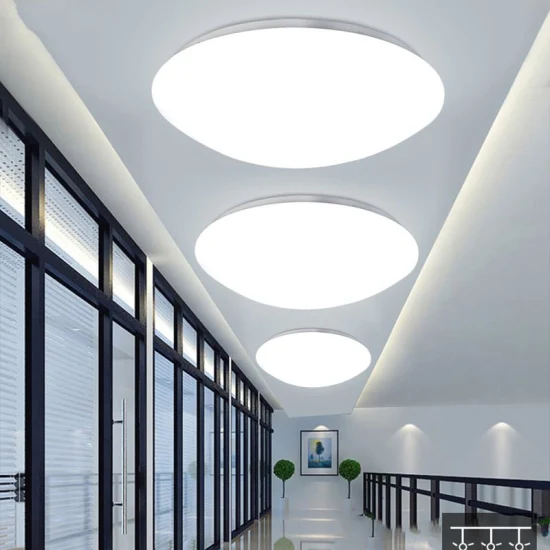
Illustrative Image (Source: Google Search)
Key Industrial Applications of Round Glass LED panel lights
Round Glass LED panel lights are increasingly being adopted across various industries due to their energy efficiency, aesthetic appeal, and versatility. Below are key industries and specific applications where these lighting solutions provide significant business value.
| Industry | Specific Application | Business Value | Sourcing Considerations |
|---|---|---|---|
| Commercial Real Estate | Office Spaces and Conference Rooms | Enhances productivity and well-being of employees through improved lighting quality. | Consider the lumens output, color temperature, and design compatibility with existing décor. |
| Healthcare | Hospitals and Clinics | Supports patient recovery by providing bright, uniform lighting that reduces eye strain. | Ensure compliance with healthcare standards and focus on non-toxic materials. |
| Retail | Showrooms and Display Areas | Attracts customers by highlighting products effectively, improving sales through better visibility. | Evaluate energy efficiency ratings and warranty options to ensure long-term savings. |
| Education | Classrooms and Lecture Halls | Facilitates better learning environments with adequate lighting that reduces fatigue. | Prioritize durability and ease of installation for frequent relocations and renovations. |
| Hospitality | Hotels and Restaurants | Creates inviting atmospheres that enhance guest experience, leading to higher satisfaction ratings. | Assess design aesthetics and energy consumption to align with sustainability goals. |
Detailed Applications
-
Commercial Real Estate: Round Glass LED panel lights are ideal for office spaces and conference rooms, where lighting plays a crucial role in employee productivity and morale. These panels offer uniform light distribution, reducing glare and creating a comfortable environment for work and meetings. Additionally, their sleek design can complement modern office aesthetics, making them a preferred choice for real estate developers and facility managers.
-
Healthcare: In hospitals and clinics, proper lighting is essential for both patient care and staff efficiency. Round Glass LED panel lights provide bright, consistent illumination that helps medical professionals perform tasks accurately while promoting a calming atmosphere for patients. Their energy efficiency also contributes to lower operational costs, which is critical in the healthcare sector where budgets are often tight.
-
Retail: Retail environments benefit significantly from the use of Round Glass LED panel lights in showrooms and display areas. These lights enhance product visibility, making items more appealing to customers and ultimately boosting sales. The ability to adjust color temperature and brightness allows retailers to create various atmospheres tailored to specific merchandise, thus optimizing the shopping experience.
-
Education: In educational institutions, classrooms and lecture halls require reliable lighting that fosters an effective learning environment. Round Glass LED panel lights provide bright, flicker-free light that helps minimize eye strain for both students and teachers. Their long lifespan and low maintenance needs make them a cost-effective solution for schools looking to upgrade their facilities.
-
Hospitality: Hotels and restaurants utilize Round Glass LED panel lights to create warm, inviting spaces that enhance guest experiences. The aesthetic versatility of these lights allows them to be integrated into various design themes, from modern to rustic. Their energy efficiency is also appealing to hospitality businesses aiming to reduce operational costs while maintaining high standards of service and comfort.
In summary, the application of Round Glass LED panel lights across these industries not only enhances functionality and aesthetics but also contributes to sustainability and cost-effectiveness, making them an excellent choice for B2B buyers looking to invest in quality lighting solutions.
Strategic Material Selection Guide for Round Glass LED panel lights
When selecting materials for round glass LED panel lights, B2B buyers must consider various properties and implications of each material type. Below, we explore four common materials used in the construction of round glass LED panel lights, analyzing their properties, advantages, disadvantages, and the impact on applications.
1. Glass
Properties:
- High transparency and clarity.
- Excellent light diffusion capabilities.
- Durable and resistant to UV light.
Pros:
- Provides a clean and aesthetic finish, enhancing the visual appeal of lighting fixtures.
- Highly resistant to yellowing or discoloration over time, ensuring long-term performance.
- Allows for efficient heat dissipation, contributing to the longevity of LED components.
Cons:
- Heavier than alternative materials, which may complicate installation.
- Breakable and can pose safety risks if not properly handled.
- Higher manufacturing costs, which can influence the overall product price.
Application Impact:
Glass is an ideal choice for high-end commercial applications where aesthetics and durability are crucial, such as in luxury hotels or retail spaces.
2. Polycarbonate
Properties:
- Lightweight and impact-resistant.
- Good optical clarity, though not as high as glass.
- Offers decent thermal resistance.
Pros:
- Significantly lighter than glass, making installation easier and reducing structural support requirements.
- Highly resistant to shattering, making it a safer option in environments prone to impacts.
- Generally lower cost compared to glass, providing a budget-friendly alternative.
Cons:
- Can scratch more easily than glass, potentially affecting optical quality over time.
- Prone to yellowing when exposed to UV light, which may diminish aesthetics and performance.
- Lower thermal resistance compared to glass, which can impact longevity in high-heat environments.
Application Impact:
Polycarbonate is suited for commercial environments where safety and weight are priorities, such as in schools or warehouses.
3. Acrylic
Properties:
- Excellent light transmission and clarity.
- Lightweight and available in various colors and finishes.
- Good weather resistance.
Pros:
- Offers a balance between durability and aesthetic appeal, suitable for many applications.
- Lighter than glass, making it easier to transport and install.
- Can be molded into various shapes, allowing for creative design possibilities.
Cons:
- More susceptible to scratches than glass, requiring careful handling.
- Limited resistance to high temperatures, which can lead to warping in extreme conditions.
- Generally, less impact-resistant than polycarbonate, though still more so than glass.
Application Impact:
Acrylic is often used in residential and light commercial applications, where design flexibility and cost are important factors.
4. Metal (Aluminum)
Properties:
- High strength-to-weight ratio.
- Excellent heat conductivity.
- Corrosion-resistant with proper coatings.
Pros:
- Extremely durable and capable of withstanding harsh conditions, making it suitable for outdoor applications.
- Can be coated or finished in various ways to enhance appearance and protect against corrosion.
- Provides structural support and can be integrated with additional features like heat sinks.
Cons:
- Can be heavier than plastic options, which may complicate installation.
- Potential for thermal expansion issues, which may affect fit over time.
- Typically higher cost than plastic materials, impacting overall product pricing.
Application Impact:
Metal is often utilized in industrial or outdoor settings where durability and thermal management are essential, such as in street lighting or manufacturing facilities.
Summary Table
| Material | Use Case | Advantage | Disadvantage | Relative Cost |
|---|---|---|---|---|
| Glass | High-end commercial lighting | Aesthetic appeal, UV resistance | Heavy, breakable, higher cost | High |
| Polycarbonate | Educational and warehouse | Lightweight, impact-resistant | Scratches easily, UV yellowing | Medium |
| Acrylic | Residential and light commercial | Good clarity, design flexibility | Scratches easily, less heat resistant | Medium |
| Metal (Aluminum) | Outdoor and industrial | Durability, excellent heat conductivity | Heavier, potential thermal expansion issues | Medium to High |
This strategic material selection guide helps international B2B buyers navigate the complexities of choosing the right material for round glass LED panel lights, considering their unique needs and market conditions across different regions.
In-depth Look: Manufacturing Processes and Quality Assurance for Round Glass LED panel lights
The manufacturing of Round Glass LED panel lights involves a series of well-coordinated processes, each critical for ensuring high-quality output. For international B2B buyers, particularly those from Africa, South America, the Middle East, and Europe, understanding these processes and the quality assurance measures in place is essential for making informed purchasing decisions. This section will explore the main stages of the manufacturing process, key techniques employed, quality control (QC) standards, checkpoints, and testing methods.
Manufacturing Processes
1. Design and Prototyping
The manufacturing journey begins with the design phase, where engineers create detailed specifications and prototypes of the LED panel lights. Advanced computer-aided design (CAD) software is typically used to create 3D models, ensuring that the design meets aesthetic, functional, and regulatory requirements. Prototyping allows manufacturers to test the design for performance and make adjustments before mass production.
2. Material Selection
Selecting the right materials is crucial for the durability and efficiency of Round Glass LED panel lights. Common materials include:
- Glass: High-quality tempered or frosted glass is preferred for its aesthetic qualities and durability.
- LED Chips: Brands like Cree, Philips, or Osram are often used for their reliability and energy efficiency.
- Circuit Boards: FR-4 is a popular choice for printed circuit boards (PCBs) due to its excellent insulating properties.
3. Manufacturing Techniques
The manufacturing process involves several key techniques:
- Glass Cutting and Shaping: Automated glass cutting machines are used to cut the glass to the required dimensions. The edges are smoothed and polished to ensure safety and aesthetics.
- LED Assembly: LED chips are mounted onto PCBs using surface-mount technology (SMT). This involves precise placement and soldering of the components onto the boards.
- Encapsulation: The assembled LED panels are encapsulated with a protective layer to enhance durability and moisture resistance.
- Wiring and Housing: Electrical wiring is integrated, and the housing is assembled, typically using aluminum or high-quality plastics to ensure heat dissipation and longevity.
4. Final Assembly and Packaging
Once all components are assembled, the final inspection is conducted to ensure that the product meets design specifications. The LED panel lights are then packaged securely to prevent damage during transit.
Quality Assurance
Quality assurance is a critical aspect of the manufacturing process, ensuring that the final products are safe, reliable, and meet international standards. Key components of the quality assurance process include:
International Standards
- ISO 9001: This standard outlines the requirements for a quality management system (QMS) and is widely adopted in the manufacturing sector. Compliance with ISO 9001 ensures consistent quality and a customer-focused approach.
- IEC Standards: For electrical products, compliance with the International Electrotechnical Commission (IEC) standards ensures safety and performance.
QC Checkpoints
Quality control is implemented at various stages of the manufacturing process:
-
Incoming Quality Control (IQC): Materials and components are inspected upon arrival at the manufacturing facility. This includes checking for defects in glass, verifying the specifications of LED chips, and ensuring compliance with regulatory standards.
-
In-Process Quality Control (IPQC): During manufacturing, regular inspections are conducted at critical stages. This may involve monitoring the glass cutting process, verifying the alignment of LED chips on the PCBs, and checking solder joints for defects.
-
Final Quality Control (FQC): After assembly, each Round Glass LED panel light undergoes a comprehensive inspection. This includes visual checks for defects, electrical testing to ensure proper functionality, and performance tests to confirm brightness and energy efficiency.
Common Testing Methods
Several testing methods are employed to ensure the quality and safety of Round Glass LED panel lights:
- Lumen Output Testing: Measures the light output to ensure it meets specifications.
- Thermal Testing: Evaluates how well the product dissipates heat, crucial for LED longevity.
- Electrical Safety Testing: Assesses insulation resistance and dielectric strength to ensure safety.
- Environmental Testing: Simulates conditions like humidity and temperature extremes to evaluate product durability.
Verifying Quality Control
For B2B buyers, verifying the quality control processes of potential suppliers is essential. Here are actionable steps to ensure product quality:
-
Request Certifications: Ask suppliers for copies of their ISO 9001 and other relevant certifications. This documentation verifies adherence to international quality standards.
-
Audit the Manufacturing Facility: If feasible, conduct an on-site audit of the manufacturing facility. This allows buyers to observe the quality control processes in action and assess the overall production environment.
-
Review Testing Reports: Request detailed testing reports for the LED panel lights, including data on lumen output, thermal performance, and safety tests. This documentation provides insights into the reliability of the products.
-
Seek References and Reviews: Contact other businesses that have purchased products from the supplier to gather feedback on their experiences, especially regarding product quality and supplier reliability.
-
Establish a Trial Order: Before committing to a large order, consider placing a smaller trial order to evaluate the product quality firsthand.
By understanding the manufacturing processes and quality assurance measures in place for Round Glass LED panel lights, international B2B buyers can make informed decisions that ensure they invest in high-quality, reliable lighting solutions for their needs.
Comprehensive Cost and Pricing Analysis for Round Glass LED panel lights Sourcing
When sourcing Round Glass LED panel lights, B2B buyers should be acutely aware of the cost structure and pricing dynamics that can significantly impact their purchasing decisions. Understanding these elements can lead to more informed decisions and better negotiation outcomes.
Cost Structure Breakdown
-
Materials: The primary cost component for Round Glass LED panel lights is the materials used. This includes the glass panel, LED chips, electronic components, and housing materials. The quality and type of materials can greatly influence the overall cost. For instance, high-quality glass and energy-efficient LED chips will typically raise the price, but they also enhance the product’s durability and energy performance.
-
Labor: Labor costs encompass the wages of workers involved in manufacturing, assembly, and quality control. Depending on the region, labor costs can vary significantly. For example, sourcing from countries with lower labor costs might reduce expenses, but this could also affect the quality of workmanship and product reliability.
-
Overhead: This includes indirect costs such as factory maintenance, utilities, and administrative expenses. Manufacturers often have different overhead structures, impacting the final price of the LED panel lights. Buyers should inquire about overhead costs during negotiations to understand how they contribute to the overall pricing.
-
Quality Control (QC): Ensuring product quality is vital, especially for LED lights that need to meet specific performance and safety standards. QC processes can add to the cost, but they are essential for avoiding potential issues later. Buyers should consider the manufacturer’s reputation for quality control when assessing price.
-
Logistics: Shipping and handling costs can vary based on the distance from the manufacturer to the buyer’s location. For international transactions, tariffs and customs duties can also play a significant role in the overall cost. Buyers should factor in these logistics costs when calculating the total price of sourcing.
Influencers on Pricing
Several factors can influence the price of Round Glass LED panel lights:
-
Volume: Larger order volumes typically yield better pricing due to economies of scale. Manufacturers are often willing to negotiate lower prices for bulk orders, which can be a significant cost-saving strategy for buyers.
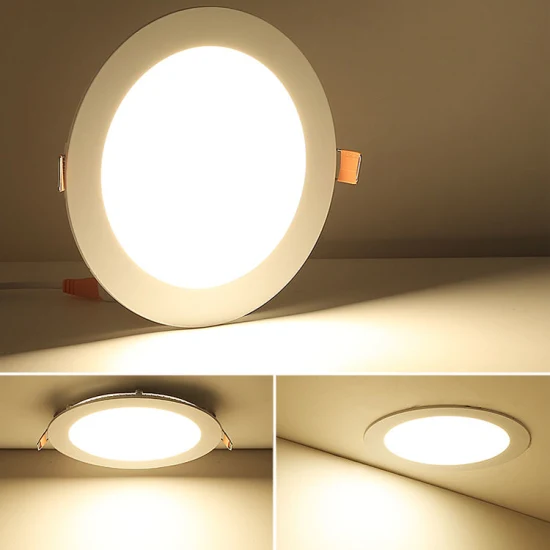
Illustrative Image (Source: Google Search)
-
Specifications: Custom specifications or unique features (such as dimmability, color temperature, or smart technology) can increase the price. Buyers need to weigh the benefits of these features against their budget and project requirements.
-
Quality: Higher quality products often come at a premium but can result in lower total cost of ownership (TCO) through reduced energy consumption and longer lifespan. Buyers should assess their needs and consider the long-term benefits of investing in higher-quality options.
Buyer Tips
To navigate the complexities of pricing and sourcing Round Glass LED panel lights effectively, consider the following strategies:
-
Negotiation: Engage in negotiations with manufacturers to achieve favorable terms. Highlighting your volume potential and long-term partnership can incentivize better pricing.
-
Total Cost of Ownership (TCO): Evaluate not just the initial purchase price but also the long-term costs associated with energy consumption, maintenance, and potential replacements. A higher upfront cost might be justified by lower operational costs over time.
-
Supplier Evaluation: Conduct thorough research on potential suppliers. Look for those with a proven track record of quality and reliability. Consider requesting samples to assess product quality before committing to large orders.
-
Market Trends: Stay informed about market trends and technological advancements in LED lighting. Innovations can lead to better products at competitive prices, allowing buyers to make more informed decisions.
By understanding the cost structure, pricing influencers, and strategic negotiation techniques, international B2B buyers can enhance their sourcing process for Round Glass LED panel lights, ultimately leading to more successful procurement outcomes.
Spotlight on Potential Round Glass LED panel lights Manufacturers and Suppliers
This section looks at several manufacturers active in the ‘Round Glass LED panel lights’ market. This is a representative sample for illustrative purposes; B2B buyers must conduct extensive due diligence.
Thinlightusa – The team at ThinLight will work
Custom LED Light Panels specializes in the design and manufacturing of innovative round glass LED panel lights, catering to businesses seeking stunning visual displays and contemporary wall solutions. With a focus on high-quality materials and advanced lighting technology, the company aims to enhance interior aesthetics while providing energy-efficient lighting options. Their product range likely includes customizable designs to meet diverse client needs across various sectors.
- …
Essential Technical Properties and Trade Terminology for Round Glass LED panel lights
When considering the procurement of Round Glass LED panel lights, international B2B buyers must be well-versed in both the essential technical properties and the specific trade terminology that governs this sector. Understanding these aspects ensures informed purchasing decisions and effective communication with suppliers.
Key Technical Properties
-
Luminous Efficacy
This metric measures how efficiently a light source converts electrical power into visible light. It is expressed in lumens per watt (lm/W). Higher luminous efficacy indicates more light output for the same energy input, which is particularly important for buyers looking to reduce energy costs and improve sustainability. -
Color Temperature
Measured in Kelvin (K), color temperature describes the appearance of light emitted by a bulb. Common ranges include warm white (2700K-3000K), neutral white (3500K-4100K), and cool white (5000K-6500K). This property affects the ambiance of a space, making it crucial for applications in commercial settings where mood and productivity are key. -
Color Rendering Index (CRI)
The CRI is a quantitative measure of a light source’s ability to reproduce colors accurately in comparison to a natural light source. A CRI of 80 or above is generally acceptable for most commercial applications, while values above 90 are preferred for environments where color discrimination is critical, such as art galleries or retail. -
Input Voltage
Round Glass LED panel lights typically operate within standard voltage ranges (e.g., 110-240V). Buyers need to ensure that the voltage specifications match the electrical infrastructure of their intended installation locations to avoid compatibility issues. -
Lifespan
The lifespan of LED panel lights is generally rated in hours of operation. Most high-quality LED panels have a lifespan of 25,000 to 50,000 hours. Understanding the lifespan helps buyers calculate long-term costs and maintenance schedules, as longer-lasting products can significantly reduce replacement expenses. -
Dimming Capability
Many Round Glass LED panel lights come with the option for dimming, which allows users to adjust light levels according to specific needs. Buyers should consider whether their chosen lighting solutions are compatible with existing dimming systems, as this can enhance flexibility and energy efficiency.
Common Trade Terminology
-
OEM (Original Equipment Manufacturer)
This term refers to companies that produce parts and equipment that may be marketed by another manufacturer. In the context of LED panel lights, an OEM may create the lights for a brand that sells them under its name. Understanding OEM relationships is vital for buyers seeking high-quality products and reliable supply chains. -
MOQ (Minimum Order Quantity)
MOQ is the smallest quantity of a product that a supplier is willing to sell. This term is crucial for international buyers, as it can affect the overall cost and logistics of procurement. Buyers should negotiate MOQs to ensure they can meet their inventory needs without overcommitting resources. -
RFQ (Request for Quotation)
An RFQ is a document that buyers send to suppliers to request pricing and availability of products. This is a standard practice in B2B transactions, allowing buyers to compare offers and make informed purchasing decisions. A well-structured RFQ can streamline the procurement process and enhance supplier relationships. -
Lead Time
Lead time refers to the time taken from placing an order to receiving the goods. Understanding lead times is essential for effective project planning and inventory management. Buyers should inquire about lead times during the RFQ process to align their purchasing schedules with project timelines. -
Certification Standards
Certifications such as CE (Conformité Européenne) or RoHS (Restriction of Hazardous Substances) are important indicators of product quality and compliance with safety regulations. Buyers should verify that the Round Glass LED panel lights meet relevant certification standards, especially when operating in regulated markets like Europe. -
Return Policy
A return policy outlines the conditions under which a buyer can return products. Familiarity with return policies helps buyers mitigate risks associated with product defects or unsatisfactory performance, ensuring a smoother procurement experience.
By familiarizing themselves with these technical properties and trade terms, international B2B buyers can make more informed decisions when sourcing Round Glass LED panel lights, ultimately leading to better outcomes for their projects and businesses.
Navigating Market Dynamics, Sourcing Trends, and Sustainability in the Round Glass LED panel lights Sector
The round glass LED panel lights sector is experiencing significant growth, driven by a combination of technological advancements, evolving consumer preferences, and an increasing emphasis on energy efficiency. As B2B buyers from Africa, South America, the Middle East, and Europe look to capitalize on this trend, understanding the current market dynamics is crucial.
Market Overview & Trends
The round glass LED panel lights market is projected to expand at a compound annual growth rate (CAGR) of over 12% through the next five years. This growth is largely fueled by the rising demand for energy-efficient lighting solutions across commercial, residential, and industrial sectors. The increasing awareness of the benefits of LED technology, such as longer lifespans and lower energy consumption, is encouraging businesses to transition from traditional lighting systems to LED alternatives.
In Africa, the market is driven by urbanization and infrastructural development, with governments investing in sustainable energy solutions to combat electricity shortages. South America is witnessing a similar shift, particularly in Brazil and Argentina, where energy efficiency regulations are becoming more stringent. The Middle East, characterized by rapid urbanization and a hot climate, is seeing an uptick in demand for lighting solutions that can withstand high temperatures while maintaining efficiency. In Europe, the focus is on replacing outdated lighting systems in public infrastructure and commercial buildings, spurred by EU directives aimed at reducing carbon footprints.
Emerging trends include the integration of smart technologies, allowing for enhanced control over lighting systems through IoT devices. This is particularly appealing to international buyers looking to enhance energy management and sustainability in their operations.
Sustainability & Ethical Sourcing
As sustainability becomes a focal point in the global market, round glass LED panel lights are increasingly being produced with environmentally friendly practices. Manufacturers are adopting sustainable materials, such as recycled glass and non-toxic components, to minimize their environmental impact. This shift not only appeals to eco-conscious buyers but also aligns with regulatory requirements in many regions.
B2B buyers should prioritize suppliers who demonstrate a commitment to sustainability through their sourcing and production practices. This includes transparency in the supply chain, the use of renewable energy in manufacturing, and adherence to international environmental standards. Ethical sourcing not only enhances brand reputation but also mitigates risks associated with regulatory compliance and consumer backlash.
Moreover, the trend towards circular economy practices is gaining traction, with manufacturers exploring ways to recycle or repurpose LED panels at the end of their life cycle. Buyers should seek partnerships with companies that are innovating in this space, as it reflects a forward-thinking approach to sustainability.
Brief Evolution/History
The evolution of round glass LED panel lights can be traced back to the early 2000s when LED technology began to gain traction as a viable lighting solution. Initially, LEDs were primarily used in indicators and displays due to their durability and energy efficiency. As technology advanced, manufacturers started to develop LED panels that could replace traditional fluorescent and incandescent lights.
By the 2010s, the introduction of round glass designs enhanced the aesthetic appeal of LED panels, making them suitable for various applications, including residential and commercial spaces. Today, these lights are recognized not only for their energy efficiency but also for their sleek design and versatility. As the market continues to evolve, innovations such as smart lighting and improved light quality are expected to further enhance the appeal of round glass LED panel lights for B2B buyers across diverse sectors.
Frequently Asked Questions (FAQs) for B2B Buyers of Round Glass LED panel lights
-
How can I effectively vet suppliers for Round Glass LED panel lights?
When vetting suppliers, prioritize those with a proven track record in the lighting industry. Check for certifications like ISO 9001, which indicates quality management standards. Request references from previous clients and investigate their production capabilities. It’s also beneficial to visit their manufacturing facility, if possible, to assess their operations firsthand. Additionally, ensure they have a clear understanding of international quality standards, especially if you’re sourcing from different continents, to avoid compliance issues. -
Are customization options available for Round Glass LED panel lights?
Yes, many suppliers offer customization options for Round Glass LED panel lights. This can include variations in size, color temperature, and wattage. When discussing customization, provide detailed specifications to ensure that the supplier understands your requirements. It’s advisable to request samples before placing a large order to evaluate the quality of the custom product. Keep in mind that extensive customization may affect lead times and costs, so plan accordingly. -
What is the minimum order quantity (MOQ) for Round Glass LED panel lights?
MOQs can vary significantly between suppliers, typically ranging from 100 to 1,000 units. Smaller manufacturers may have lower MOQs, while larger firms often require higher quantities. When negotiating, express your interest in establishing a long-term relationship, which might encourage suppliers to lower their MOQ. Additionally, consider aggregating orders with other buyers to meet the MOQ if your demand is low initially. -
How can I ensure quality assurance (QA) for my Round Glass LED panel lights?
Implementing a robust QA process is crucial. Request suppliers to provide detailed QA protocols, including testing procedures for durability, energy efficiency, and safety standards. Ask for third-party testing certifications to confirm compliance with international standards such as CE or RoHS. Conduct regular inspections during production and before shipment to ensure that the products meet your specifications and quality expectations. -
What logistics considerations should I keep in mind when sourcing Round Glass LED panel lights?
Logistics play a vital role in the sourcing process. Consider the shipping methods available, as air freight is faster but more expensive than sea freight. Evaluate the supplier’s location in relation to shipping ports to minimize transit times. Additionally, be aware of import duties and taxes specific to your country, as these can affect overall costs. Working with a reliable freight forwarder can streamline the logistics process and ensure timely delivery. -
How do I handle potential delays in the supply chain for my LED panel lights?
To mitigate delays, establish clear communication channels with your supplier and set realistic timelines. Develop contingency plans, such as identifying alternative suppliers or maintaining a buffer stock. Regularly review the production schedule and shipping status to anticipate any issues. Building strong relationships with your suppliers can also enhance responsiveness and flexibility in addressing unforeseen delays. -
What are the key features to look for in Round Glass LED panel lights?
When selecting Round Glass LED panel lights, prioritize features such as energy efficiency (look for high lumen output with low wattage), durability (check for materials that resist corrosion), and color rendering index (CRI) for optimal lighting quality. Additionally, consider dimmable options for versatility in different environments. Ensure the lights meet local energy efficiency regulations and standards to guarantee compliance and performance. -
How can I ensure compliance with international standards when sourcing LED panel lights?
To ensure compliance, work with suppliers who are knowledgeable about the specific regulations in your target market. Ask for certifications such as CE for Europe, FCC for the U.S., or SABS for South Africa. Familiarize yourself with local regulations regarding energy efficiency and safety standards. Additionally, consider third-party audits of the products to verify compliance before importing, which can help prevent costly delays or fines.
Important Disclaimer & Terms of Use
⚠️ Important Disclaimer
The information provided in this guide is for informational and educational purposes only. It does not constitute professional procurement, financial, or legal advice.
While we have made every effort to ensure accuracy, we are not responsible for any errors or omissions. Market conditions and company details are subject to change.

Illustrative Image (Source: Google Search)
B2B buyers must conduct their own independent and thorough due diligence before making any purchasing decisions.
Strategic Sourcing Conclusion and Outlook for Round Glass LED panel lights
As the market for Round Glass LED panel lights continues to evolve, strategic sourcing emerges as a pivotal factor for international B2B buyers seeking competitive advantage. By prioritizing partnerships with reliable suppliers, buyers can ensure access to high-quality products that not only meet regulatory standards but also align with sustainability goals. The demand for energy-efficient lighting solutions is gaining momentum, particularly in regions such as Africa and South America, where there is a significant push towards green technologies.
Investing in a well-defined sourcing strategy allows businesses to mitigate risks associated with supply chain disruptions, fluctuating costs, and varying quality standards across different markets. Additionally, leveraging local suppliers can enhance logistics efficiency and reduce carbon footprints, which is increasingly important to stakeholders across Europe and the Middle East.
Looking ahead, B2B buyers are encouraged to remain agile and responsive to market trends while fostering collaborative relationships with suppliers. As technology advances and consumer preferences shift, staying informed and adaptable will be key to capitalizing on emerging opportunities in the Round Glass LED panel light sector. Take the initiative to evaluate your sourcing strategies today to position your business for future success in this dynamic marketplace.

